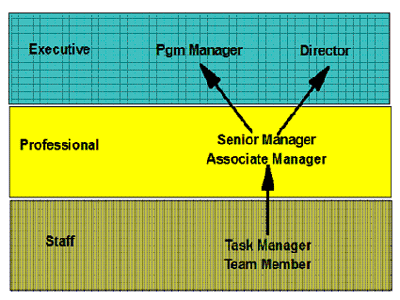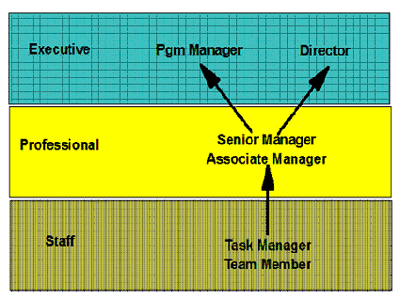Where will BA and PM Professionals Come from? Next Steps
This is the seventh and final article in this series. The first six articles were:
#1 Is It Time for the BA and the PM to Get Hitched?
#2 Effective Requirements Gathering and Management Needs the Skills of both the BA and PM
#3 An Examination of the BA and PM Skills Profiles
#4 A First Pass at Defining the BA/PM Position Family
#5 A First Look under the Hood of the BA/PM Position Family
#6 A Second Look under the Hood of the BA/PM Position Family
These articles described the BA/PM professional, why we need such a professional, how the BA/PM position family and career path might be defined and what a professional development program might look like. This closing article focuses on the next steps that might be taken to bring the BA/PM professional into reality. In total then the seven articles lay out by example a blueprint for moving forward. Early in the 1990s, I had the opportunity to design, build and deploy a similar application for IT professionals. Many of the components of that application are analogs of the system I am proposing below. The technology is much more sophisticated now, but I have been there and done that. The following is my suggestion for the system that can provide for the career planning and professional development of BA/PM professionals. It is the logical consequence of the six previous articles.
A System to Prepare BA/PM Professionals
The project to design and develop this system will be a challenging project, but you already should have guessed that. Like every effective project manager, let’s begin this project with what I call a Project Overview Statement (POS). For the PMs this is similar to your PMBOK Project Charter. For the BAs this is similar to your BABOK Project Scope Statement. This POS will be the framework and guide for all project work to follow. For reference purposes, this project will be called the PDP Systems Design and Development Project. This article does not discuss deployment. Deployment of the PDP System is left for another project and is briefly mentioned below.
Project Overview Statement
The POS is the first document that describes a proposed project. It is a high-level description of a business situation and what you propose to do about it. It is a one page document with five parts. I have used it for more than 40 years with great success. For the PDP Systems Design and Development Project here is my version of the five parts of the POS.
Problem/ Opportunity
The project landscape is changing. Complexity and uncertainty dominate. Only rarely can requirements be completely defined and documented at the outset. An agile approach to these projects is highly recommended. To be effective in managing these projects the agile project manager must be fully skilled in both project management and business analysis.
Goal
Design and develop an internet-based career planning and professional development system to prepare professionals to be both project managers and business analysts at all levels of skill and competency so that they are fully capable of successfully managing projects at all levels of complexity and uncertainty. This new professional is called a BA/PM professional.
Objectives
-
Define the BA/PM position family
-
Define the BA/PM career paths
-
Identify the skills and competencies required of the BA/PM professional
-
Establish the minimum skill/competency proficiency profile of each BA/PM professional
-
Define the internet-based Professional Development Program (PDP)
-
Design the skill and competency assessment tools portfolio
-
Design the career planning module
-
Design the professional development module
-
Design the integrated PDP System
-
Develop the integrated PDP System
-
Document the integrated PDP System
Success Criteria
-
The PDP System will be a thin client internet-based system
-
The PDP System will be ready for deployment within 12 months of starting the project
-
The PDP System will be parameter-driven and fully support user definable PM and BA position families, career paths and skill/competency profiles
-
Using the PDP System will not require any training – it will be intuitive.
-
The PDP System will not have a User Guide.
Assumptions, Risks, Obstacles
-
The need for a BA/PM professional will not be acceptable to the entire BA and PM communities
-
The project will be co-managed by a representative from the PM community and a representative from the BA community
-
Qualified technical resources will be made available when needed to design and build the PDP System
-
The BA and PM communities will be honest participants in reviewing and commenting on the PDP System
-
An agile project management approach will successfully deliver the PDP System
-
A sponsor can be found to financially support the project
Suggested High-level Work Breakdown Structure
Once the POS has been approved by representatives from both the BA and PM communities detailed project planning can begin. A high-level work breakdown structure might look something like the following:
Phase I Scoping the PDP System
-
Describe the PDP System Task Force purpose and membership
-
Recruit the PDP System Task Force members
-
Plan and hold the PDP System Kick-off Meeting
-
Synthesize current BABOK and PMBOK position definition & documentation
-
Document the requirements of the desired PDP System
Phase II PDP System High-level Design
-
Define and document the PDP System deliverables
-
Define and document the PDP System process flow
-
Gain approval of the PDP System high-level design
Phase III PDP System Detailed Design & Documentation
-
Recruit the PDP System Development Team
-
Design the documentation format and templates
-
Construct the PDP System documentation
-
Circulate PDP System documentation for review
-
Revise PDP System documentation
-
Gain approval of the PDP System detailed design
Phase IV PDP System Development
-
Recruit PDP System Development co-project managers
-
Recruit PDP System Development Team
-
Review the PDP System documentation
-
Define the PDP System Technical Requirements and Architecture
-
Prioritize PDP System Requirements
-
Define PDP System Development cycles (plan, build, check) and time boxes
-
Execute PDP System Development Cycles
-
Demonstrate having met the requirements of the PDP System Task Force
-
Discharge the PDP System Development Team
Phase V PDP System Marketing
-
Create the PDP System Marketing Program
-
Plan and publish PDP System articles
-
Design and produce PDP System promotional materials
-
Distribute PDP System promotional materials
-
Discharge PDP System Task Force
A Call to Action
So there you have it! The complexity and challenge of the PDP System Design and Development Project should not be underestimated. Its importance cannot be overstated either. It is my firm belief that having BA/PM professionals on your staff will have a significant impact on project success.
Testimonial data that I have gathered over the years from over 10,000 project managers worldwide suggests that over 70% of all projects are in the agile category. These projects are such that requirements identification and solution definition can only come about from learning and discovery during project execution. That requires that some form of iterative approach be employed. This is clearly the domain of the agile project and requires the leadership of the BA/PM professional. That they are needed is not debatable. The processes to develop them are by no means obvious or in place.
Through this and the preceding articles I’ve tried to build the case for formally recognizing the need for the BA/PM professional and for the systems to meet their career planning and professional development needs. I’ve taken a pass at the high-level work breakdown structure as the beginnings of the project plan to put the requisite PDP System in place to support those needs.
How might we make that plan happen? If your organization sees the importance and the need for such a system and suffers the pains of frequently occurring distressed projects and excessive project failure, perhaps they would be interested in funding a PDP Systems Design, Development and Deployment Project to meet their own needs. This would get us off to a fast track start. Could your employer be one of those companies?
Alternatively, a BA or PM product/service provider might be interested in adding the PDP System to their portfolio through a joint venture to design, develop, market and sell the PDP System. Do you work for such a company?
In any case the next step for me is to recruit a BA professional who would be interested in partnering with me to take a BA/PM advocacy position and then to begin working on the PDP System. If you and I are of like mind, if you are an accomplished BA professional, if you have name recognition in the BA community, if you have some time and would like to make a difference, I would like to hear from you. My direct email is [email protected]. I’m serious!
Robert K. Wysocki, Ph.D., has over 40 years experience as a project management consultant and trainer, information systems manager, systems and management consultant, author, training developer and provider. He has written fourteen books on project management and information systems management. One of his books, Effective Project Management: Traditional, Adaptive, Extreme,3rd Edition, has been a best seller and is recommended by the Project Management Institute for the library of every project manager. He has over 30 publications in professional and trade journals and has made more than 100 presentations at professional and trade conferences and meetings. He has developed more than 20 project management courses and trained over 10,000 project managers.

 We’ve got another line-up of timely articles examining the field of business analysis and surrounding areas. I feel certain that you’re going to find some interesting and provocative ideas and we look forward to your responses, both positive and negative.
We’ve got another line-up of timely articles examining the field of business analysis and surrounding areas. I feel certain that you’re going to find some interesting and provocative ideas and we look forward to your responses, both positive and negative.
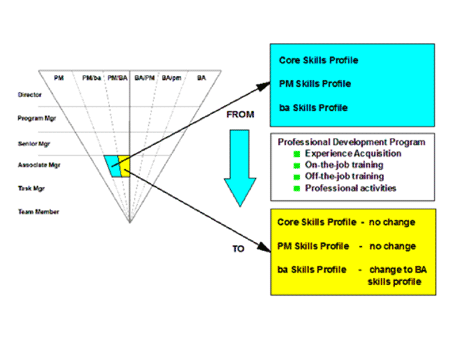
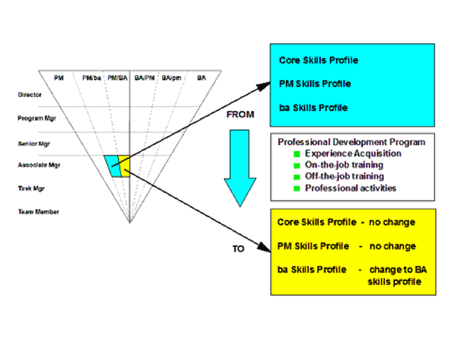
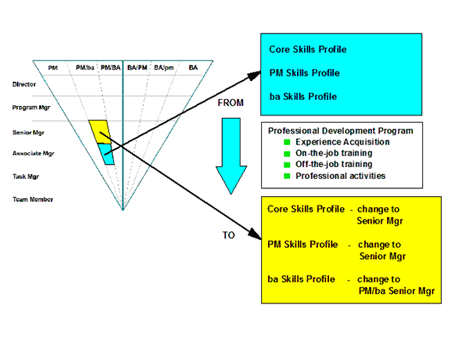
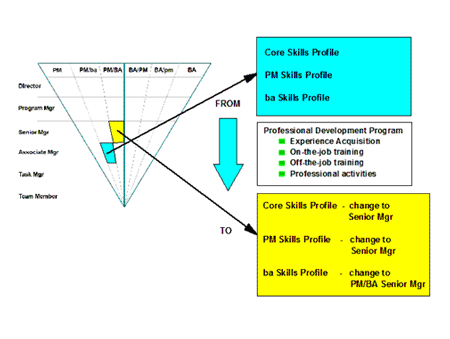
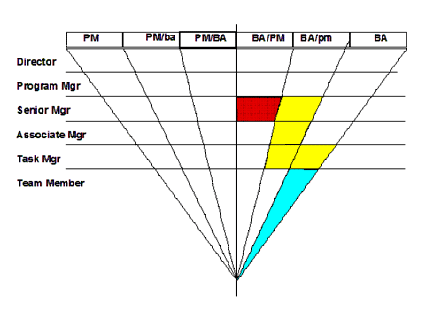

 As you read this, you may well be gearing up for the July 4 Independence Day holiday or, if you’re in Canada, winding down after the July 1 Canada Day holiday. Whatever the celebration, I hope a good time was or will be had by all.
As you read this, you may well be gearing up for the July 4 Independence Day holiday or, if you’re in Canada, winding down after the July 1 Canada Day holiday. Whatever the celebration, I hope a good time was or will be had by all.
